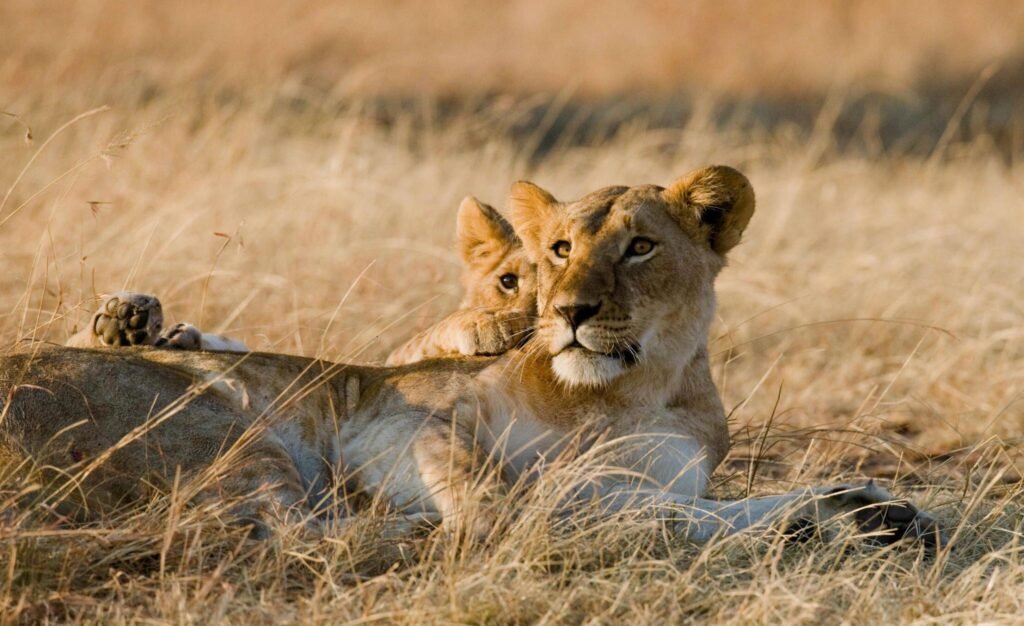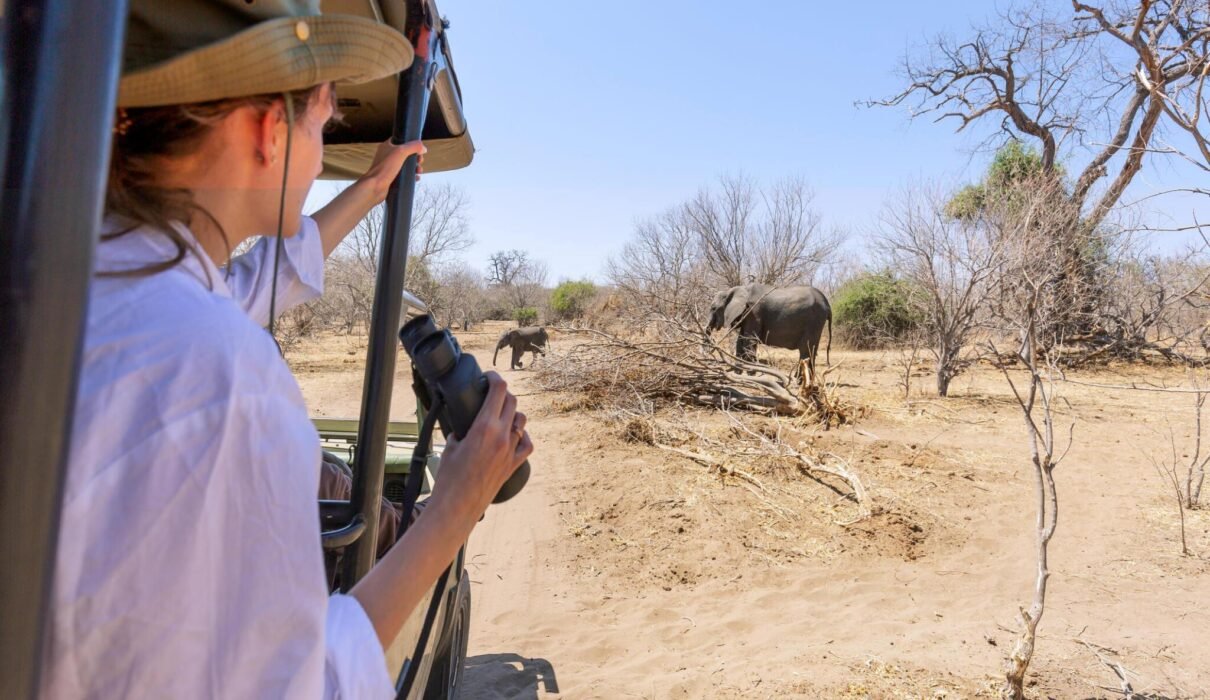What Camera Should I Bring for a Tanzania Safari ? Planning a safari to Tanzania is exciting, but choosing the right camera can be a bit overwhelming. Whether you’re hoping to capture the sweeping landscapes of the Serengeti or a close-up of a lion lounging in the Ngorongoro Crater, bringing the right gear will make all the difference in your photos. In this guide, we’ll break down the best camera options for a Tanzania safari, helping you make the most of your photography experience.

What Camera Should I Bring for a Tanzania Safari ? : Why Camera Choice Matters for a Safari
A safari in Tanzania offers unparalleled wildlife viewing and breathtaking scenery. However, animals are often at a distance, and the lighting conditions can be tricky. This means you need a camera with a good zoom, fast focus, and the ability to perform well in varying light. Your phone’s camera may be handy, but for true wildlife photography, a dedicated camera with powerful lenses will yield better results.
Learn more about the basics of wildlife photography.
What Camera Should I Bring for a Tanzania Safari ? : DSLR and Mirrorless Cameras: Best for Professional Quality
If you’re looking for professional-grade photos, DSLR (Digital Single-Lens Reflex) or mirrorless cameras are your best option. These cameras offer superior image quality, fast focusing, and the ability to change lenses depending on the scene.
Recommended DSLR and Mirrorless Models:
- Canon EOS R5: A high-end mirrorless camera with excellent autofocus and image stabilization.
- Nikon D850: A powerful DSLR known for its exceptional detail and low-light performance.
- Sony Alpha 7R IV: Another great mirrorless option with a high-resolution sensor perfect for wildlife shots.
Lenses to Consider:
- Telephoto lenses (70-300mm or 100-400mm) are essential for capturing distant animals.
- A wide-angle lens is great for sweeping landscapes like the Serengeti plains.
Explore expert reviews of the best cameras for safaris.
What Camera Should I Bring for a Tanzania Safari ? : Superzoom or Bridge Cameras: Ideal for Versatility
If you want something less bulky but still capable of taking high-quality wildlife shots, a superzoom camera (also known as a bridge camera) is a fantastic choice. These cameras are lightweight, easier to handle, and come with powerful built-in zooms, allowing you to photograph distant animals without changing lenses.
Best Superzoom Models:
- Panasonic Lumix FZ1000 II: A popular superzoom camera with a 16x optical zoom and 4K video capabilities.
- Sony RX10 IV: Known for its excellent image quality and fast autofocus, it’s perfect for fast-moving animals.
- Canon PowerShot SX70 HS: An affordable option with a 65x zoom, giving you close-ups of animals far away.
Superzoom cameras offer versatility for those who prefer an all-in-one option without the hassle of carrying multiple lenses.
Check out a detailed comparison of superzoom cameras.
What Camera Should I Bring for a Tanzania Safari ? : Point-and-Shoot Cameras: Compact and Convenient
If you’re looking for a compact and easy-to-use camera that still delivers great images, a point-and-shoot might be your best option. These cameras won’t match the quality of DSLRs or superzooms, but they’re lightweight, affordable, and easy to carry on safari.
Top Point-and-Shoot Cameras for Safaris:
- Sony Cyber-shot RX100 VII: Known for its compact size and excellent image quality, with a 24-200mm zoom range.
- Canon G7 X Mark III: Another solid option with 4K video recording and great image quality.
- Panasonic Lumix ZS200: A travel-friendly camera with a 15x zoom, perfect for casual wildlife photography.
Find out more about the best travel point-and-shoot cameras.
What Camera Should I Bring for a Tanzania Safari ? : Action Cameras: Best for Video and Tough Conditions
If you’re planning on capturing video during your Tanzania safari, or if you want something rugged and compact, consider bringing an action camera. These cameras are great for shooting high-quality video and can handle rough conditions like dust and rain, making them perfect for safari.
Recommended Action Cameras:
- GoPro HERO10 Black: Known for its 5.3K video and superior image stabilization, it’s perfect for shooting safari adventures.
- DJI Osmo Action: Another great option with 4K video, waterproofing, and dual screens for vlogging.
While these cameras don’t have a zoom lens, they’re ideal for wide-angle shots and capturing action sequences.
Explore the best action cameras for adventure travel.
What Camera Should I Bring for a Tanzania Safari ? – Drones: A Unique Perspective
Using a drone is becoming increasingly popular for capturing aerial views of wildlife and landscapes. While drones aren’t allowed in all national parks in Tanzania, they can offer a breathtaking perspective of the surroundings if permitted. Before bringing a drone, always check the regulations with your safari operator and the parks you’ll be visiting.
Best Drone for Safaris:
- DJI Mavic Air 2: Compact, lightweight, and easy to control, with 4K video and an excellent range.
- DJI Mini 2: A great lightweight option for travelers, offering 4K video in a compact package.
Discover more about drone photography and regulations.
What Camera Should I Bring for a Tanzania Safari ? : Important Accessories for Your Safari Photography
1. Extra Batteries and Memory Cards
On a safari, you’re likely to take hundreds of photos daily. Be sure to pack plenty of extra batteries and memory cards to avoid running out of power or storage during key moments.
2. Lens Cleaning Kit
Dust is a common challenge on safari, especially when driving through the plains. A simple lens cleaning kit will help keep your lenses clean, ensuring your photos remain clear and sharp.
Find out how to care for your camera in dusty environments.
3. Monopod or Tripod
A lightweight monopod or tripod is great for stabilizing your shots, especially in low-light conditions. Many photographers prefer a monopod on safari since it’s easier to use in vehicles, and it won’t take up too much space.
See the best tripods and monopods for wildlife photography.
What Camera Should I Bring for a Tanzania Safari ? : Where to Go for the Best Safari Photography in Tanzania
Tanzania is home to some of the most famous national parks in the world, each offering its own unique photo opportunities.
Serengeti National Park
The Serengeti is known for the Great Migration, where millions of wildebeests, zebras, and gazelles cross the plains in search of greener pastures. With stunning open landscapes and plenty of wildlife action, it’s a paradise for photographers.
Learn more about photographing the Great Migration.
Ngorongoro Crater
The Ngorongoro Crater is a natural wonder that offers the chance to see the Big Five all within a day’s game drive. The crater’s unique geography creates perfect conditions for wildlife photography, making it one of the best spots in Tanzania to capture diverse species in one location.
Explore the photography potential of Ngorongoro Crater.
For guided safaris that take you to the best spots for photography, visit Kilimanjaro Climb Specialist or Eddy Tours & Safaris. They offer custom safari packages that cater to photographers of all levels.

What Camera Should I Bring for a Tanzania Safari ? : Conclusion
Choosing the right camera for your Tanzania safari depends on your needs, photography skill level, and the type of shots you want to capture. Whether you’re using a professional DSLR or a travel-friendly superzoom camera, having the right equipment will help you capture the awe-inspiring beauty of Tanzania’s landscapes and wildlife.
Start planning your ultimate safari adventure with Kilimanjaro Climb Specialist or Eddy Tours & Safaris for personalized tours that ensure you get the best photography opportunities.

